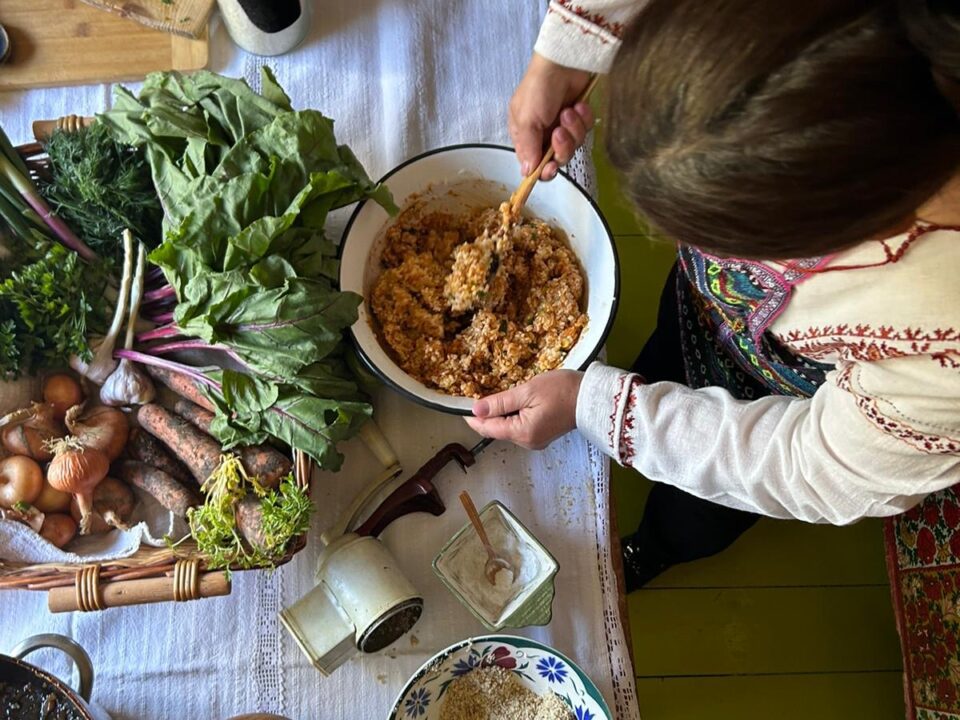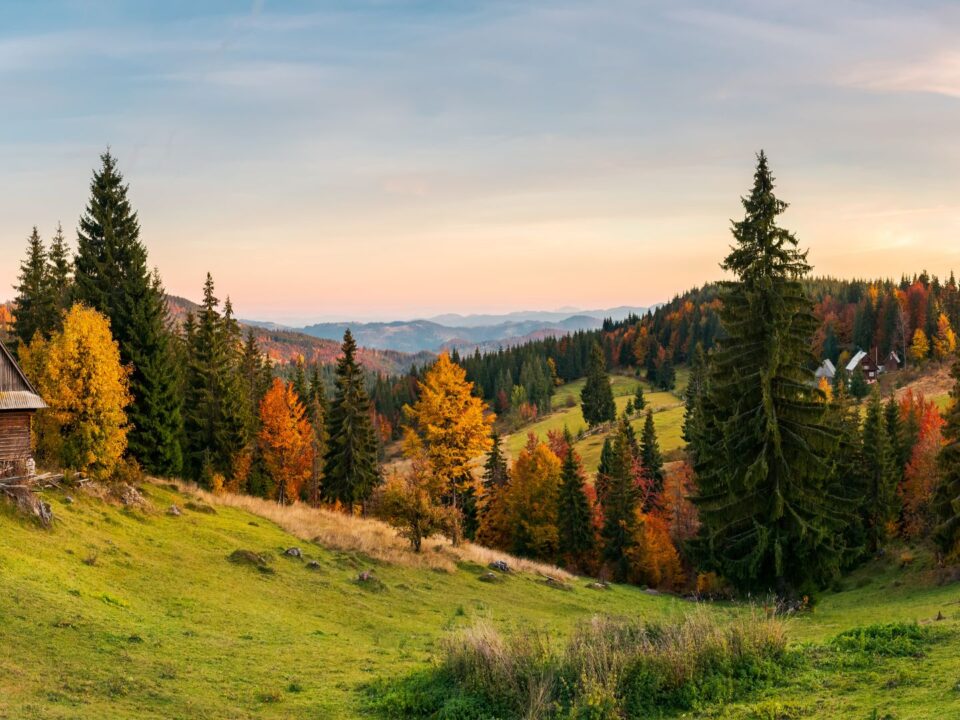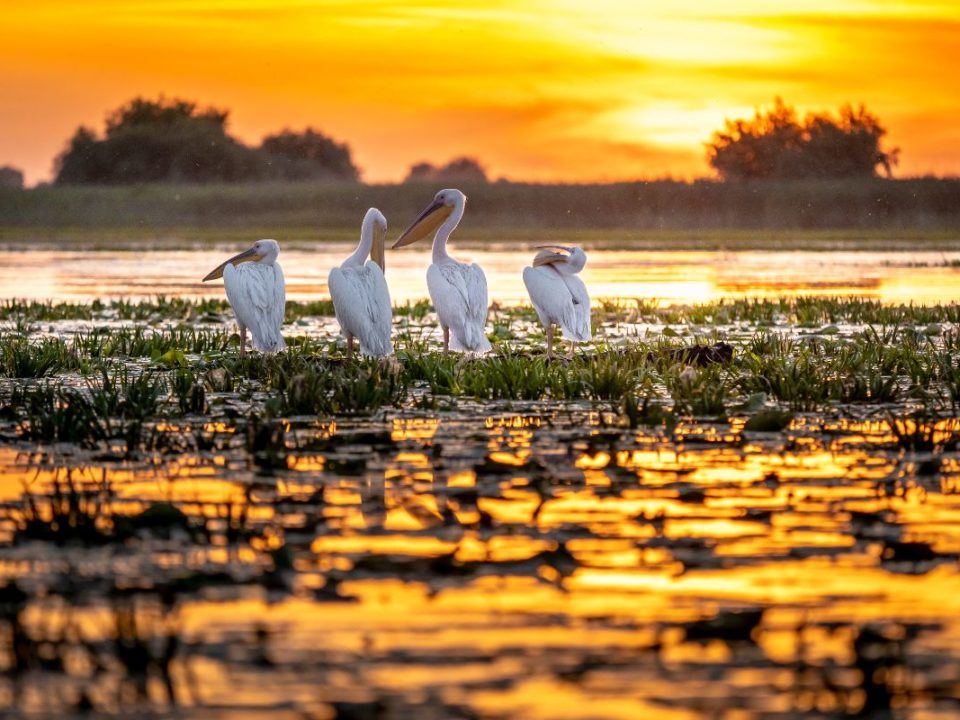
From the ground up
August 11, 2023
Promoting the Unpromoted
September 22, 2023When it comes to wine, Romania might not be the first country that comes to mind, but here there is much untapped potential in a glass. This Eastern European nation has a long and rich history of winemaking that dates back thousands of years. In fact, Romania is one of the oldest wine-producing regions in the world, with evidence of viticulture dating back 6000 years. The archeological sites from Histria reveal this. The National Museum of History even hosted the exhibition ‘Dacia, the last roman frontier’, showcasing this rich tradition.
The local wine industry has experienced ups and downs over the centuries, influenced by political and economic factors. This was the case in all of Europe, but was even more prominent in our part of the continent. During Communism, the priority was to mass-produce low-quality wines. However, since the fall of Communism in 1989, the Romanian wine industry has undergone a remarkable transformation. It’s now focusing on quality, and revitalizing traditional winemaking techniques. Romania is one of the top fifteen wine-producing countries in the world. Yet most of its wine is marketed and consumed domestically.
According to the latest OIV (Organisation Internationale de la Vigne et du Vin) study, Romania officially produces roughly 3.9 million hectoliters, ranking sixth in Europe and thirteenth worldwide. So with this much wine produced, one could consider that wine is the first choice for a lot of Romanians. Paradoxically, however, beer has held that spot for a long time. But we will be tapping that subject another time, because yes, we do produce some good beer too.
In the European markets Romanian wines are gaining recognition for their unique characteristics and excellent value for money. The climate diversity and rich soil provide ideal conditions for grape cultivation. This results in wines that are distinct and representative of their terroir. Words that best describe these wines: authenticity, uniqueness, and of course untapped potential in a glass.
Every season, winemakers are experimenting with both indigenous and international grape varieties, producing wines that can easily compete with those from more well-known wine regions. And every season we, the people from the wine world, myself included, have a blast at the wine tasting exhibitions. It is like rediscovering Romania one glass after another, one region after another.
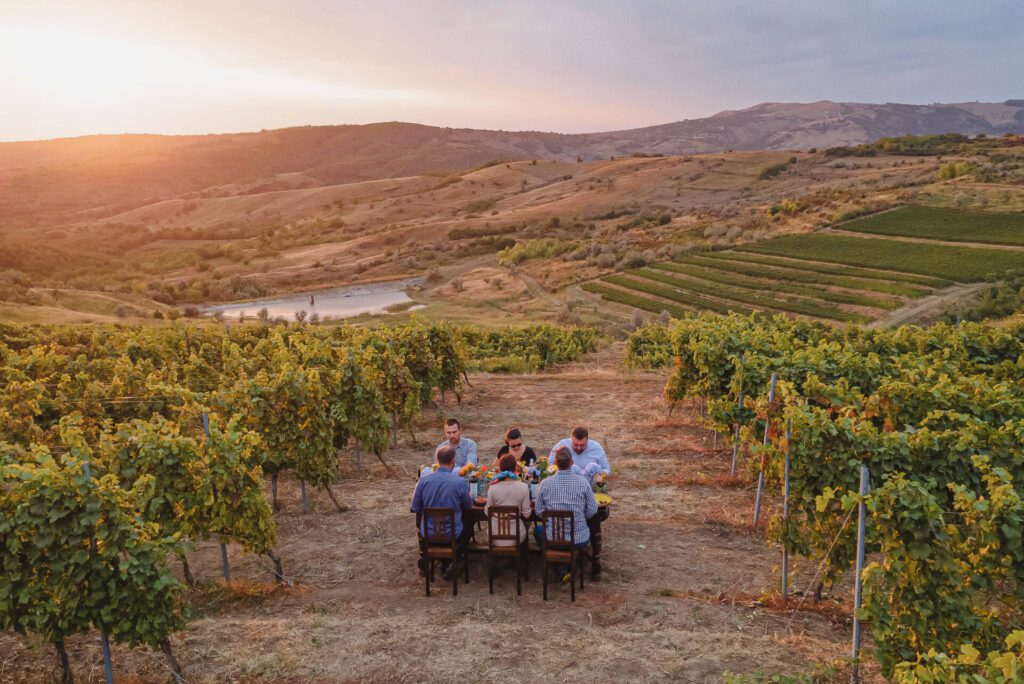
Wine Regions and Their Style
Romania is home to several wine regions, each with its own distinctive style and grape varieties. Here are some of the prominent wine regions to explore when visiting the land Dracula made famous:
- Transylvania
Located in the heart of Romania, Transylvania boasts a cooler climate. This is ideal for growing aromatic white varieties such as Feteasca Regala and Feteasca Alba. These wines have afresh acidity and floral aromas, making them perfect for summer sipping. When I am in this region, Liliac Winery is a personal must-stop. It’s a place where I can have a glass from their Private Collection Sparkling, made with traditional methods from Feteasca Alba. This wine evokes a beautiful summer morning breeze with white flowers and pastry fresh-out-of-the-oven. You can also stay the night at Jelna Winery, have a nice dinner paired with their wines. And while you’re here, you can also stop at Villa Vinea for another authentic wine experience.
- Moldova
Situated in the eastern part of the country, Moldova is the largest wine-producing region in Romania. Here, you’ll find a wide range of wines, including both reds and whites. Feteasca Neagra, a local red grape variety, is highly regarded for its bold and robust character. It’s often compared to Cabernet Sauvignon or Syrah. For white wine lovers and rose, the region also produces excellent examples of Chardonnay, Sauvignon Blanc, Tamaioasa Romaneasca and Busuioaca de Bohotin .
But let’s talk reds for now, because in Moldova they do know how to make them. Here, Gramma Winery has succeeded to produce a 2019 Feteasca Neagra in the amarone style that is simply exquisite. You have to ask for it specifically though, as it is only offered on request and in a limited edition. When in the region, take your time and explore Busuioaca de Bohotin from Averesti Winery. They won important prizes with this indigenous grape, and have revived some other local varieties that deserve a try. Hermeziu Winery is also a go-to, and a personal favorite is Girboiu Winery.
- Dobrogea
Located in southeastern Romania, Dobrogea benefits from the proximity of the Black Sea, which brings maritime influences to the region. The sandy soil and warm climate make Dobrogea ideal for growing red grape varieties such as Merlot and Pinot Noir. Dobrogea’s wines are known for their velvety texture and ripe fruit flavors. When in the region, I do like to go for a tasting at Rasova, one of the most developed, futuristic and animated wineries in the region. Some other great options in the area are Clos des Colombes, a French-owned winery, and Vinuri de Macin or Murfatlar. This is the region that must be experienced by tasting, as every year the wines are developing in a unique way.
- Muntenia
Dealu Mare, one of the DOC (Denumire de origine controlata) is located in the southern part of Romania, in the Muntenia region. It is one of the most famous, developed, and important wine regions in the country, known for its exceptional red wines. The wines of Dealu Mare are predominantly made from international grape varieties, such as Cabernet Sauvignon, Merlot, and Pinot Noir, but indigenous varieties like Feteasca Neagra are also thriving in this terroir. The red wines produced here are characterized by their rich and full-bodied nature, with intense flavors of dark fruits, spice, and often a hint of oak. They exhibit well-structured tannins and good aging potential, allowing them to develop complexity and depth over time.
Dealu Mare is also known for its white wines, primarily made from varieties such as Chardonnay, Sauvignon Blanc, and Feteasca Alba. These white wines display a refreshing acidity, vibrant fruit flavors, and floral aromas, making them a delightful choice for those seeking a lighter and crisper style. If you want to go to a winery and are hoping this is the place, you’re absolutely right. You have at least 30-40 wineries to sample in the area, all of which compete in international competitions. Take your time and try Apogeum, Velvet, Mierla Alba, Tohani, Ceptura, Budureasca, Iconic Estate, Davino or Metamorfosis. Bear in mind that you will find a lot of French and Italian influence in the wine production in the area.
Bonus: Bucharest is only 1.5 h away.
- Banat & Crisana
The Minis Maderat is in the western part of Romania, a DOC region that benefits from a unique microclimate. The combination of warm summers and cool nights contributes to the development of balanced and expressive wines. The characteristics of Minis Maderat wines are elegance, finesse, and distinct mineral character. The region is renowned for its aromatic white wines, particularly those made from the indigenous grape variety, Tamaioasa Romaneasca and Mustoasa de Maderat. These aromatic varieties are producing wines with pronounced floral and muscat-like aromas, along with a crisp acidity and a hint of sweetness.
Additionally, Minis Maderat also produces notable red wines, primarily made from international varieties like Merlot and Pinot Noir. These reds display a medium to full-bodied profile, with ripe fruit flavors, smooth tannins, and a subtle earthy undertone. These wines are versatile and you can enjoy them on their own or paired with a variety of dishes. When traveling in this region take in consideration that you will hear a lot of Hungarian, German or even Serbian spoken and you can actually have one of the most authentic pairing of Romanian wines with Hungarian recipes at Balla Geza Winery, but you can also make a stop and taste wines from one of Romania’s largest producers: Recas Winery.
- Oltenia
Situated in the southwestern part of the country, this region has distinctive wines from Dragasani DOC, unique grape varieties, and historical significance in Romanian winemaking. It’s a captivating wine region, known for its distinctive wines, crafted from indigenous grape varieties like Feteasca Neagra, Negru de Dragasani, Cramposie Selectionata and Tamaioasa Romaneasca. The wines from Dragasani reflect the region’s terroir, showcasing elegance, complexity, and a true sense of place and the old Romanian heritage of wine making.
Exploring the wines of Dragasani offers a unique and rewarding experience for wine enthusiasts looking to discover the hidden gems of Romanian winemaking. Here you can also find some archeological sites. They bring evidence of the long tradition of winemaking in these parts of Danube. Give Histria, Bauer, Stirbey, Oprisor, Corcova or Avincis a try. You’ll be mesmerized by how many differences there are in a glass in only one sip.
What Wine Is a Must-Try When Traveling in This Country?
When traveling in Romania, one wine that you must try is “Feteasca Neagra.” This indigenous red grape variety produces rich and full-bodied wines with flavors of dark fruits, spices, and a touch of earthiness and oak. Feteasca Neagra showcases the uniqueness of Romanian wines and reflects the country’s winemaking heritage. It pairs exceptionally well with traditional Romanian dishes such as grilled meat, mici, red meat stews, and hearty and flavored cheeses such as Cascaval de Saveni or even ‘Branza de burduf’.
Additionally, don’t miss the opportunity to taste Romanian sparkling wines. They are often made from Feteasca Regala or Tamaioasa Romaneasca using the traditional method. These bubblies offer a delightful alternative to Champagne or Prosecco. They are perfect for toasting special occasions or simply celebrating life’s little pleasures.
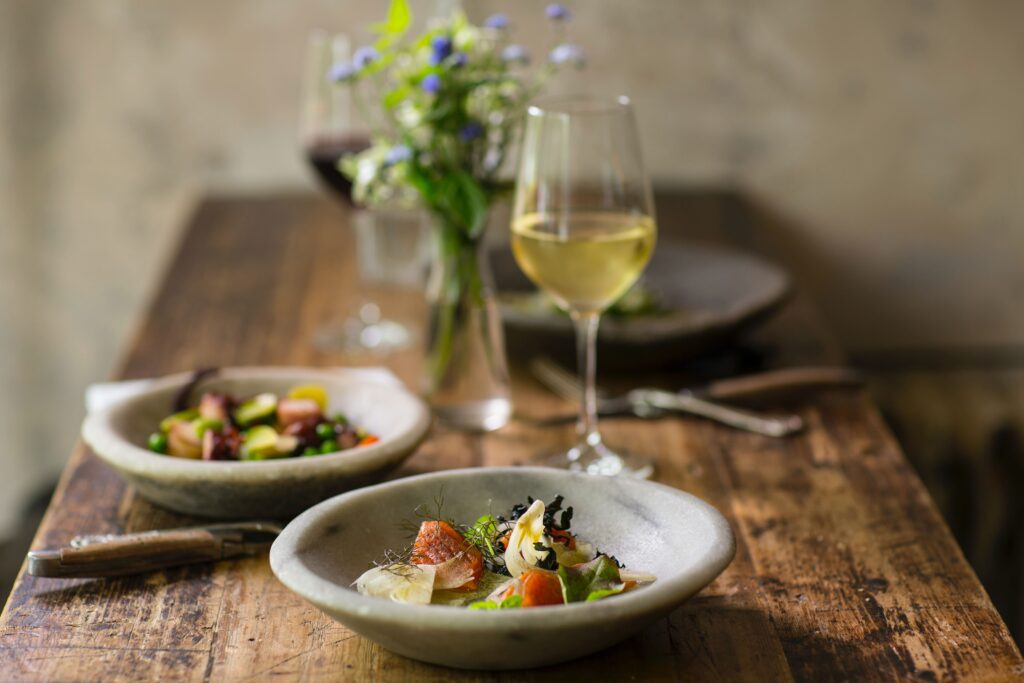
What Should You Know When Pairing Romanian Wine and Food?
Pairing Romanian wine with local cuisine can enhance your dining experience. It can bring out the best in both the food and wine. Here are a few tips to keep in mind:
- Traditional Romanian dishes often feature rich flavors and hearty ingredients. For red meats, grilled meats or stews, opt for full-bodied red wines like Feteasca Neagra. The robust tannins and ripe fruit flavors of these wines complement the richness of the dishes. They surely provide a satisfying pairing.
- For lighter fare or seafood dishes such as fish roe, gilt-head bream, fish fingers, anchovies, consider trying aromatic white wines such as Feteasca Regala. These wines offer crisp acidity and refreshing citrus or floral notes. That can balance the flavors of lighter dishes and seafood.
- Don’t forget about dessert! Get to know Romania for its sweet treats like cozonac (a traditional sweet bread) or papanasi (cheese doughnuts). Pair these indulgent delights with late harvest or sweet wines like Tamaioasa Romaneasca or Grasa de Cotnari. The natural sweetness and honeyed flavors of these wines complement the sweetness of the desserts, creating a delightful finale to your meal.
It’s also worth noting that wine tourism is gaining popularity in Romania. Many wineries offer tours and tastings, providing visitors with the opportunity to learn about the winemaking process. You can also explore vineyards and historical sites, and sample a variety of wines. Some wineries even offer accommodation, allowing guests to immerse themselves in the vineyard experience. Such places you can find at Jelna in Transylvania, Apogeum in Muntenia, Balla Geza in Banat, Clos des Colombes in Dobrogea, Avincis in Oltenia.
In conclusion, Romanian wines are a hidden gem waiting for you to discover them. With a rich history, diverse wine regions, and unique grape varieties, Romania offers a wine experience that is both intriguing and satisfying. Whether you’re a wine enthusiast or simply enjoy exploring new flavours, make sure to include Romanian wines in your itinerary when visiting this captivating and authentic country.
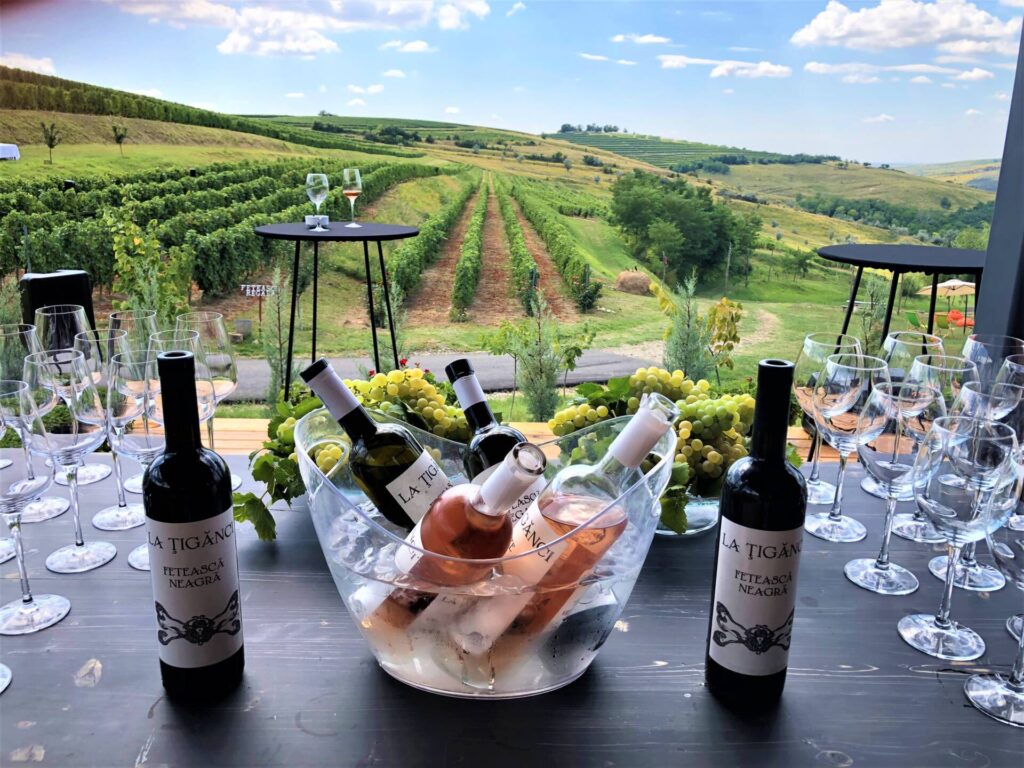
Cheers to an unforgettable wine journey that will delight all of your senses!
Article written for Beyond Dracula by Roxana Licara.

